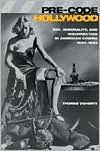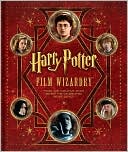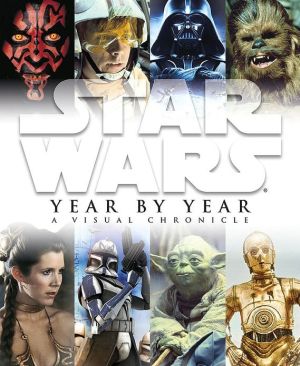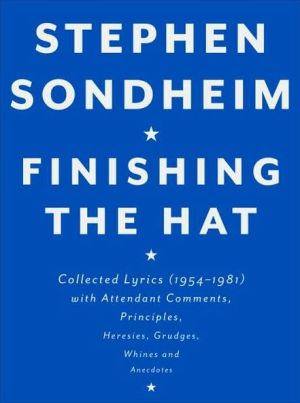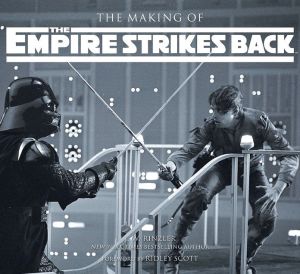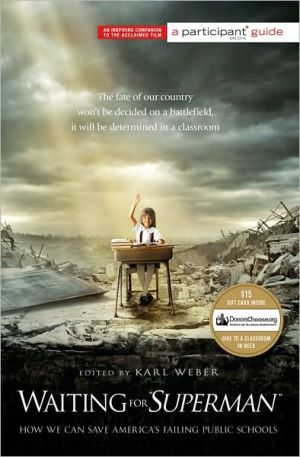Pre-Code Hollywood: Sex, Immorality, and Insurrection in American Cinema, 1930--1934
Pre-Code Hollywood explores the fascinating period in American motion picture history from 1930 to 1934 when the commandments of the Production Code Administration were violated with impunity in a series of wildly unconventional films -- a time when censorship was lax and Hollywood made the most of it. Though more unbridled, salacious, subversive, and just plain bizarre than what came afterwards, the films of the period do indeed have the look of Hollywood cinema -- but the moral terrain is...
Search in google:
This book explores the four-year interval between 1930 and 1934, a time when censorship was lax and Hollywood made the most of it. Doherty chronicles how the freewheeling films of an unrestricted Hollywood inform the culture of America in the 1930s. Publishers Weekly In early 1930s America, weighed down by the Depression, a vice-ridden, wise-cracking, anarchic antiauthoritarianism ruled Hollywood. Doherty's exhaustive cultural history of the films produced in the last years before the enactment of the Motion Picture Production Code reveals how the ascendancy of sound and a plummeting economy led to four years of wildly edgy films (1930-1934), radically different from the spic-and-span products of classic Hollywood. Most of the films chronicled here--sporting titles like Eight Girls in a Boat, Call Her Savage and Merrily We Go to Hell--have been both forgotten by film historians and unavailable to generations of late-night TV viewers. Doherty begins with the misery and discontent gripping the U.S. in the 1930s, explaining how these forces shaped a motion picture industry just learning how to use the power of sound. He organizes the later chapters around a colorful, trashy array of genres: anarchic comedies; horror, gangster and vice films; over-the-top newsreels; and expeditionary films set in dangerous territory. Doherty's plot summaries at times grow tiresome, but he rarely fails to enliven them with gossip, quips or anecdotes. Ultimately , he shows how the fun came to a crashing halt when the National Legion of Decency and the Production Code Administration, spearheaded by Joseph Breen, launched a massive and astonishingly successful crusade to clean up "the pest hole that infects the entire country with its obscene and lascivious moving pictures." Given the politics swirling around Hollywood's edgier fare in the wake of the shootings in Littleton, Colo., this lurid and all too short-lived chapter of Hollywood history has never seemed more germane. (Sept.) FYI: A series at New York's Film Forum, The Joy of Pre-Code, running from August 20 to September 14, 1999, will feature more than 40 precode films, including many discussed by Doherty. Copyright 1999 Cahners Business Information.
\ \ \ \ \ Chapter One\ On the Cusp of Classical Hollywood Cinema\ \ \ On or about July 1934 American cinema changed. During that month, the Production Code Administration, popularly known as the Hays Office, began to regulate, systematically and scrupulously, the content of Hollywood motion pictures. For the next thirty years, cinematic space was a patrolled landscape with secure perimeters and well-defined borders. Adopted under duress at the urging of priests and politicians, Hollywood's in-house policy of self-censorship set the boundaries for what could be seen, heard, even implied on screen. Not until the mid-1950s did cracks appear in the structure and not until 1968, when the motion picture industry adopted its alphabet ratings system, did the Code edifice finally come crumbling down.\ Hollywood's vaunted "golden age" began with the Code and ended with its demise. An artistic flowering of incalculable cultural impact, Hollywood under the Code bequeathed the great generative legacy for screens large and small, the visual storehouse that still propels waves of images washing across a channel-surfing planet. The synergistic spread of American entertainment, the whole global kaleidoscope of films, television, video games, computer graphics, and CD-ROMs, draws on the censored heritage for archival material, deep backstory, narrative blueprints, and moral ballast. Whether conventional retread or postmodern pastiche, Hollywood under the Code is the prime host to a long line of moving image parasites.\ But what of Hollywood "before the Code" the motion picture record that predates thecensorship that polished up the golden age heritage? For four years—from March 31, 1930, when the Motion Picture Producers and Distributors of America formally pledged to abide by the Production Code, until July 2, 1934, when the MPPDA empowered the Production Code Administration to enforce it—compliance with the Code was a verbal agreement that, as producer Samuel Goldwyn might have said, wasn't worth the paper it was written on. Relatively and in context, Hollywood was free to roam far and wide, or at least to venture farther out on the frontiers of free expression than would be permitted after the Code, when the range was fenced in and the deputies were on duty.\ That four-year interval marks a fascinating and anomalous passage in American motion picture history: the so-called pre-Code era, when censorship was lax and Hollywood made the most of it. Unlike all studio system feature films released after July 1934, pre-Code Hollywood did not adhere to the strict regulations on matters of sex, vice, violence, and moral meaning forced upon the balance of Hollywood cinema. In language and image, implicit meanings and explicit depictions, elliptical allusions and unmistakable references, pre-Code Hollywood cinema points to a road not taken. For four years, the Code commandments were violated with impunity and inventiveness in a series of wildly eccentric films. More unbridled, salacious, subversive, and just plain bizarre than what came afterwards, they look like Hollywood cinema but the moral terrain is so off-kilter they seem imported from a parallel universe.\ In a sense pre-Code Hollywood is from another universe. It lays bare what Hollywood under the Code did its best to cover up and push off screen. Sexual liaisons unsanctified by the laws of God or man in Unashamed (1932), Blonde Venus (1932), and She Done Him Wrong (1933); marriage ridiculed and redefined in Madame Satan (1930), The Common Law (1931), and Old Morals for New (1932); ethnic lines crossed and racial barriers ignored in The Bitter Tea of General Yen (1933), The Emperor Jones (1933), and Massacre (1934); economic injustice exposed and political corruption assumed in Wild Boys of the Road (1933), This Day and Age (1933), and Gabriel Over the White House (1933); vice unpunished and virtue unrewarded in Red Headed Woman (1932), Call Her Savage (1932), and Baby Face (1933)—in sum, pretty much the raw stuff of American culture, unvarnished and unveiled.\ Of course Hollywood after 1934 is a rich index of all the above too. The fractures of American life, still less the open embrace of sex, did not close up when the Code clamped down. No matter how rigid the body cast, Hollywood cinema is too supple and expressive an art to constrain what Walt Whitman celebrated as "nature without check with original energy." The Code seal stamped on Alfred Hitchcock's Notorious (1946) did not keep Ingrid Bergman and Cary Grant from simmering with erotic passion and flaunting the sacrament of marriage, nor did it temper the plight of the dispossessed or strangle the voice of protest in John Ford's version of John Steinbeck's The Grapes of Wrath (1940). Always too, in the hidden recesses of the cinematic subtext, under the surface of avowed morality and happy endings, Hollywood under the Code is fraught with defiance of Code authority.\ But in pre-Code Hollywood the fissures crack open with rougher edges and sharper points. What is concealed, subterranean, and repressed in Hollywood under the Code leaps out exposed, on the surface, and unbound in Hollywood before the Code. Often what is seen and heard in pre-Code Hollywood is not so much as glimpsed or whispered in Codified Hollywood. Images, language, ideas, and implications are projected on screen with blunt force and unmistakable meaning. Aptly dubbed "the motion picture industry's Magna Charta of official decency," the Production Code set down strict laws of moral gravity. The universe of pre-Code Hollywood operated under rules of its own.\ \ \ Patrolling the Diegesis\ \ \ To movie buffs, film professors, and inside dopesters, the phrase "classical Hollywood cinema" is a loaded term liable to go off whenever the dialogue turns philosophical at a postscreening postmortem. The classic work on classical Hollywood cinema is David Bordwell, Janet Staiger, and Kristen Thompson's The Classical Hollywood Cinema: Film Style and Mode of Production to 1960, published in 1985. A magisterial and synoptic study, it refined a set of notions percolating in academic film studies since the early 1970s, around the time the field became a secure university discipline with its own departmental stationery and tenure-track teaching slots. As Bordwell, Staiger, and Thompson told it, the vital components of classical Hollywood cinema were a conventional visual style and a sturdy economic structure: how the films looked and how they were produced, distributed, and exhibited. That bifocal vision on film culture and studio commerce—looking at the means of art and the means of production, the "show" and the "business" of moviemaking—remains the best way of understanding the hybrid medium.\ As an art, Hollywood's creative unit is the narrative feature film, which became its flagship product around 1912—1915, the traditional touchstone being D.W. Griffith's The Birth of a Nation (1915). Griffith's "twelve-reel photoplay" deployed full blown the still-emergent grammar of the moving image, a morphology evolved from snippets of documentary "actualities," picaresque slapstick, and one-reel vignettes. After two decades of moving-image spectatorship, roughly from Thomas Edison's perfection of the kinetoscope in 1894 to the nickelodeon era of 1907-1912, the building blocks of visual literacy had been mastered by filmmaker and spectator alike: the close-up, parallel editing, point-of-view shots, eyeline matches, montage sequences, and so on. The same period marked another crucial transition, the shift from film-as-spectacle to film-as-fabula, from looking at things move to being moved by things on screen. Though anything might be filmed, the movies were now primarily a story machine.\ As a business, the medium underwent a concurrent standardization. The pioneer days of rough-and-tumble hustle settled into a civilized arrangement wherein the fittest of moviemakers survived by crushing competition, gobbling up the leavings, and consolidating assets. A technologically complex, capital-intensive business dependent on circuits of national distribution, the motion picture industry made no room for small entrepreneurs or corner shops. Hollywood, a place name that became synonymous with the American motion picture industry around 1920, came to describe not just a location but an economic practice. The vertical integration of motion picture production, distribution, and exhibition—in which a single corporate entity produced, sent out, and screened the film product—crystallized into the mature oligopoly of the Hollywood studio system. Like the items on a grocery shelf or automobile lot, the familiar brand names—Columbia, Fox, MGM, Paramount, RKO, Universal, and Warner Brothers—were defined by their trademark stars, consistent styles, and signature genres.\ Bordwell, Thompson, and Staiger set the rough boundaries of classical Hollywood cinema from 1917 to 1960. However, since the gambit of historians dealing with matters of priority is to backdate a genesis farther and farther into the past, and since research into the archaeology of early cinema continues to unearth prior claimants, some film scholars have pushed back the original birth date of classical Hollywood cinema to about Edwin S. Porter's The Great Train Robbery (1903). Eventually, an enterprising graduate student will discover that the first true exemplar of classical Hollywood cinema was originally shot in the back of Thomas Edison's Black Maria in 1894.\ Yet whether the date is 1903 or 1917, the problem with placing silent cinema under the rubric of classical Hollywood cinema is that no one watches it. For all its influence on descendants, the forebearer is forgotten and the debts unacknowledged. If "classical" means primal and formative, then the Bordwell-Staiger-Thompson time clock seems punctual enough, but if it means alive in the mind's eye, it runs slow. Except to antiquarians and preservationists, silent cinema has little presence on the cultural radar screen, its landmark films unrented on video, its iconic images spotted only as fodder for video collage on MTV. Synchronized sound is so intimately embedded in the structure of motion picture grammar that it takes an effort of imagination to realize that American cinema lived quite well without it for over thirty years.\ The introduction of sound to the cinema in 1927 beckons as a likely starting point for a true classical era, but not until 1930, when the major studios announced the cessation of silent film production, did the death knell for the silent screen toll for certain. If film style and mode of production yoked to sound are the prime ingredients of classical Hollywood cinema, then 1930 seems the logical birth date, especially since it coincides so fortuitously with the formal adoption of the Production Code.\ Yet to think of classical Hollywood cinema is to think not solely of means of production and film style, silent or sound, but to conjure a moral universe with known visual and ethical outlines. This is not to say that Hollywood cinema in the silent and pre-Code era refused to bow to official virtue and popular expectations. Still less is it to imply that the grammar deployed by the embryonic sound cinema was not first cast by the previous three decades of silent cinema. It is to say that the Code gave Hollywood the framework to thrive economically and ripen artistically and that Hollywood in turn gave the Code provenance over a cultural commodity of great price—the visible images and manifest values of American motion pictures. What makes Hollywood's classic age "classical" is not just the film style or the studio system but the moral stakes.\ Naturally, motion picture morality, or the lack of it, had been monitored by guardians of civic virtue since the chaste peck between the middle-aged lovebirds in The Kiss (1896). For progressive reformers and cultural conservatives who beheld in the embryonic medium the potential for social damage and moral blight, the products of the motion picture industry (no less than the methods of meat packing or the distribution of demon rum) warranted regulation and prohibition as a public health measure. Especially after World War I, when Hollywood began spinning out whole film cycles devoted to the sins of wild youth, dancing daughters, straying wives, and dark seducers, the moral guardians tried their damndest to break up the parade of wastrels marching in the vanguard of the Jazz Age assault on Victorian values. In 1922, after a cascade of sordid scandals offscreen and shocking antics onscreen, their agitations compelled studio executives to recruit Presbyterian elder and model of probity Will H. Hays, postmaster general from the administration of Warren G. Harding, to clean up, or at least put a more respectable face on, the motion picture industry. For the next quarter century, as president of the Motion Picture Producers and Distributors of America, Hays was Hollywood's man in the crosshairs of controversy, the official who defended the industry from attacks, recited soothing nostrums, and negotiated treaties to cease hostilities. The most significant pact between the censors and the censorable was the Production Code itself, adopted in 1930 to roll back the profligacy of the 1920s and set a reformed America again on the path of righteousness in the new, harsher decade.\ The Production Code, the enabling legislation for classical Hollywood cinema, was written by Father Daniel Lord, a Jesuit priest, and Martin Quigley, a prominent Roman Catholic layman and editor of the influential exhibitors' journal Motion Picture Herald. Their amalgam of Irish-Catholic Victorianism colors much of the cloistered design of classical Hollywood cinema, not just the warm-hearted padres played by Spencer Tracy, Pat O'Brien, and Bing Crosby, but the deeper lessons of the Baltimore catechism—deference to civil and religious authorities, insistence on personal responsibility, belief in the salvific worth of suffering, and resistance to the pleasures of the flesh in thought, word, and deed.\ As theological prolegomenon and cultural guidebook, the Code was a sophisticated piece of work. Contrary to popular belief, the document was not a grunted jeremiad from bluenose fussbudgets, but a polished treatise reflecting long and deep thought in aesthetics, education, communications theory, and moral philosophy. In the context of its day, the Code expressed a progressive and reformist impulse akin to that other emblem of elite cultural management, the "noble experiment" of Prohibition. It evinced concern for the proper nurturing of the young and the protection of women, demanded due respect for indigenous ethnics and foreign peoples, and sought to uplift the lower orders and convert the criminal mentality. If the intention was social control, the allegiance was on the side of the angels.\ In good Jesuit fashion, the Code was divided into two parts, a set of "general principles" (the moral vision) and "particular applications" (a precise listing of forbidden material). Deeply Catholic in tone and outlook, the animating rationale for the Code held that "art can be morally evil in its effects," that both "as a product [of a mind] and the cause of definite effects, it has a deep moral significance and an unmistakable moral quality." As such, motion pictures demanded responsible handling from those who traffic in them and careful monitoring from those who shepherd the flock.\ Though the tones echoed the intellectual lineage of Ignatious Loyola, the Code rightly presumed a broader constituency, a well-founded confidence that sound-thinking Americans, Catholic and non-Catholic alike, need not debate the right or wrong of some issues or even utter aloud certain unpleasant matters. Pronouncing the document "consonant with public opinion ... censorship or no censorship," the poet and biographer John Drinkwater detected "nothing in the moral aspects of the Code to which reasonable objection can be taken." In an age of moral consensus, at least among the moral guardians, the zone of agreement was large, the areas of legitimate controversy small, and the realm "beyond the pale" self-evident. "Even within the limits of pure love," asserted the Code delicately, "certain facts have been universally regarded by lawmakers as outside the limits of safe presentation." Father Lord and Mr. Quigley saw no need to defile the document by typesetting long lists of "pointed profanity" or "vulgar expressions." Likewise, the prohibition against homosexuality dared not speak the name, but it didn't need to. "Impure love, the love which society has always regarded as wrong and which has been banned by divine law ... must not be presented as attractive and beautiful." However, another kind of forbidden love did warrant prohibition by name: "Miscegenation," precisely defined as "sex relationships between the white and black races," was never permitted.\ Lending the Code moral authority and widespread acceptance was the composition of Hollywood's audience, conceived to be a great undifferentiated Public comprised of all ages, classes, and moral sensibilities. On the universality of Hollywood cinema, both the censors and the studios agreed: everyone goes to the movies. "Most arts appeal to the mature," declared the Code. "This art appeals at once to every class—mature, immature, developed, undeveloped, law-abiding, criminal." Given the nature of the mass medium, an "`adults only'" policy would never be "completely satisfactory" and "only partially effective" even were Hollywood willing to shut out its most loyal customers, the young and gregarious. "Films, unlike books and music, can with difficulty be confined to certain selected groups," asserted the Code. So reasoned Dr. Harlan T. Horner, assistant commissioner of education for New York, in upholding a statewide ban on The Mystery of Life (1931), a nature documentary featuring trial lawyer Clarence Darrow discoursing upon the theory of evolution. "What constitutes decency in a plan of general public amusement open to both sexes and all ages may be vastly different from what constitutes decency before a restricted audience brought together for scientific or educational purposes," explained Dr. Horner. "In this case, the presentation of such views taken in connection with the explanation of them in a public moving picture house, wholly unrestricted, constitutes indecency." Graduate students in medicine might watch the love life of one-cell animals, snails, and spiders, but not the young and the old, the male and the female mixed together indiscriminately.\ In 1930, to circumvent government regulation and squelch the protests of religious and civic groups, the Motion Picture Producers and Distributors of America pledged to abide by the Lord-Quigley commandments. Yet the men charged with bringing studio productions into line with the Code—the weak-willed factotums Col. Jason S. Joy and Dr. James Wingate of the Studio Relations Committee—lacked the fortitude and vision to enforce it. More importantly, the regulatory and oversight process was a rigged game: members of the MPPDA could appeal unfavorable decisions by Code administrators to the next level of executive authority, namely themselves. By gentleman's agreement, material that violated both the letter and spirit of the Code was granted a transit visa for theatrical release. The lax oversight was an open secret in Hollywood. "Does any producer pay attention to the Hays Code?" the Hollywood Reporter inquired archly in 1931, knowing none did. "Producers have reduced the Hays Production Code to sieve-like proportions and are deliberately out-smarting their own document," declared Variety in 1933. The same year a prominent screenwriter asserted that "the Hays moral code is not even a joke any more; it's just a memory."\ Looking at the gunplay of James Cagney and listening to the wordplay of Mae West, American Catholics agreed. Beginning in late 1933 and with escalating vehemence throughout the first half of 1934, they launched a crusade against Hollywood immorality. When the New Deal in Washington insinuated the probability of federal censorship, and a reformist educational group called the Motion Picture Research Council published a series of reports linking bad behavior to bad movies, the studios found themselves fighting a three-front war against church, state, and social science. Desperate to negotiate a peace treaty, they agreed to reorganize the internal enforcement mechanism to ensure that the Code, so long a paper tiger, acquired teeth. The old Studio Relations Committee and the Producers Appeal Board were abolished and replaced with the Production Code Administration. The PCA derived its authority from, and ultimately answered to, the board of directors of the MPPDA, the New York bankers and moneymen behind the industry, not the on-site studio executives in Hollywood.\ To head the new agency, MPPDA president Will H. Hays appointed Joseph I. Breen, a former newspaperman and influential Roman Catholic layman. As chief of the Production Code Administration from 1934 until 1954, he became one of the most influential figures in American culture. Upon his death in 1965, Variety summed up Breen's preeminent role: "More than any single individual, he shaped the moral stature of the American motion picture." With the exception of a brief and unhappy term as an executive at RKO from 1941 until 1942, Breen enforced the Code commandments with a potent mix of missionary zeal and administrative tenacity. Interpreter of the law and court of last resort, he presided over and upheld the moral universe of classical Hollywood cinema.\ Thus, just as the term "pre-Code" has erroneously come to designate the 1930-1934 interregnum between adoption of the Code and enforcement of it, "the Hays Office," the shorthand designation for the perceived nexus of Hollywood censorship, is also a misnomer: "pre-Breen" or "Breen Office" would be more accurate.\ Even for moral guardians of Breen's dedication, however, film censorship can be a tricky business. Images must be cut, dialogue overdubbed or deleted, and explicit messages and subtle implications excised from what the argot of academic film criticism calls the "diegesis." Put simply, the diegesis is the world of the film, the universe inhabited by the characters existing in the landscape of cinema. "Diegetic" elements are experienced by the characters in the film and (vicariously) by the spectator; "nondiegetic" elements are apprehended by the spectator alone. For example, in Casablanca (1942), when Sam performs "As Time Goes By" on the piano for Ilsa at Rick's Cafe, the music is diegetic, heard by Sam, Ilsa, and Rick ("I told you never to play that song!") as well as by the spectator. When the orchestral score reprises "As Time Goes By" on the soundtrack as Rick bids Ilsa goodbye at the airport, the music is nondiegetic, heard by and affecting the heartstrings of the spectator but not Rick, Ilsa, Victor Lazlo, and Captain Renault.\ The job of the motion picture censor is to patrol the diegesis, keeping an eye and ear out for images, language, and meanings that should be banished from the world of the film. The easiest part of the assignment is to connect the dots and detect what is visually and verbally forbidden by name, snipping out a flash of flesh or cutting out a vulgar epithet. Anyone can see that Claudette Colbert's milk bath in The Sign of the Cross (1932) is exposing more of her breasts than section VI, part 3, of the Production Code permits, or hear that the fifth word in the closing line from The Front Page (1931) ("That son of a bitch stole my watch!") must be drowned out by ambient noise on the soundtrack. More challenging is the work of textual analysis and narrative rehabilitation that discerns and redirects hidden lessons and moral meanings. The astute and dedicated censor knows that correct images and proper words do not alone a moral universe make.\ Breen saw his errand in the Hollywood wilderness in grander terms than the concealment of skin and the deletion of curses. He wanted to remake American cinema into a positive force for good, to imbue it with a transcendent sense of virtue and order. To earn Breen's imprimatur, the moral meaning of the picture needed to be clear, edifying, and preferably Catholic. Not for nothing was he called the "supreme pontiff of motion picture morals." Hollywood might show the evil that men do but only if it were vanquished by the last reel, with the guilty punished and the sinner redeemed. "Compensating moral value" Breen called it, the dictum that "any theme must contain at least sufficient good in the story to compensate for, and to counteract, any evil which it relates." Moral compensation was the only justification for a glimpse of the snake in paradise.\ Adhering to the catechism's injunction that sin resided in three places ("thought, word, and deed"), the genius of Hollywood's system of censorship lay in the sophisticated critical scrutiny accorded not only what was seen, said, and meant onscreen but what was apprehended from offscreen as well. True dream police, the Code censors extended their surveillance beyond the visible world and into the space of the spectator's mind. For example, in The Office Wife (1930), the camera follows Joan Blondell's legs into a bathroom, where her lingerie drops to the floor as she disrobes. The camera remains focused on her legs as she slips out of her chemise, her arms entering the frame from above, thereby conjuring an image of the naked actress bending over, her dorsal exposure beckoning in offscreen space should the camera tilt upward just a few inches higher. In pre-Code Hollywood, even what the spectator doesn't see is more nakedly suggested. Under the Code, so explicit a mental image—that is, an image not even depicted on screen but merely planted in the spectator's mind—would be too arousing to summon up.\ Just as the Code monitored explicit images in offscreen space, so too did it regulate images that existed only contingently if at all. Where the unseen body of Joan Blondell from The Office Wife is sharply outlined, the offscreen images in Hollywood under the Code are blurred and indistinct. The very obscurity of the image, its openness to varied interpretations, was precisely what allowed the Code to grant it a conditional existence. Under this formulation, sophisticated and morally fit adults picked up on the shady implications their guileless but susceptible children missed. The Code itself recognized the two levels of comprehension: "Maturer minds may easily understand and accept without harm subject matter in plots which does younger people positive harm." Provided the children were quarantined and the meaning was elliptical, the Code permitted the possibility of a cinematically inspired thought crime. Two examples—one from the fully operating years of Code regulation, one from the lax enforcement of the pre-Code interregnum—illustrate the universe of difference.\ Leo McCarey's Make Way for Tomorrow (1937) is a heartbreaking melodrama about an impoverished elderly couple, played by Frank Morgan and Beulah Bondi, who are forced to depend on the kindness of familiars, the ungrateful brats who are their grown children. Farmed out to two sets of homes, separated for the first time in fifty years of marriage, they endure the humiliation of being the recipients of filial charity unwillingly given. The grandmother finds shelter but not welcome in the apartment of her eldest son, whose upscale wife and teenage daughter resent the old lady putting a crimp in their styles. In a subplot apprehensible only to the alert and sophisticated, granddaughter Rhoda (Barbara Read) is seeing a married man on the sly. The spectator who left for refreshments midway into the plot might have missed the hints: the girl, roped into taking her grandmother to the movies, sneaks out of the theater to meet secretly with a man; later, she returns from the assignation to pick up granny after the show. In the mannered world of 1930s cinema, the mere fact she consorts with a man who does not come to the door to meet her parents is a portent of trouble. The man in question is not so much as glimpsed; all is rendered elliptically.\ One night Rhoda doesn't come home. Next morning, grandmother and mother wait nervously by the telephone. The phone rings and only the grandmother's side of the conversation is heard. A description of the scene and a verbatim transcription of the dialogue leaves much unsaid:\ \ \ "Hello? Yes? This is Mrs. Cooper," says the grandmother, forgetting she shares the name with her daughter-in-law. "What? Don't talk so fast ..." Her eyes widen, her jaw drops. "You don't want me—uh, hello?"\ "Why didn't you let me talk?" demands the mother.\ "She hung up. Talked about Rhoda."\ "What did she say?"\ The grandmother glances nervously over at an eavesdropping maid. "I'll tell you," she says, leading the mother into a back bedroom, tut-tut-ting all the way, "Oh, dear ... oh, my, my ..."\ The door closes behind the pair and the camera remains outside the room, fixed on the door. The maid (Louise Beavers) sneaks over, pretending to dust, and leans down by the keyhole to listen, a surrogate for the spectator.\ After a slow fade, the scene shifts to the two women behind the closed door. "You don't know how awful I feel about this," says the grandmother, signaling that the unspeakable contents of the phone conversation have been exchanged during the ellipsis.\ \ \ In 1937 few spectators under the age of fourteen would have been able to figure out the message of the unscreened conversation, namely that a betrayed wife has called to tell the mother about her wayward daughter and threaten scandal. An early draft of the screenplay confirms the suspicion: Rhoda holes up with her lover in a hotel room in New Jersey and must be brought back to her family by the authorities. During the preproduction review process, Breen precisely pinpointed the moral flashpoint ("the indication on page F-22 that the granddaughter, Rhoda, spends the night in a hotel room with a married man") and decreed the solution ("this sequence should be rewritten to remove any flavor of adultery or loose sex").\ McCarey complied, making the flavor of adultery a challenge for adults to detect. Since to speak the transgression is to call down judgment upon the sinner, the revelation is neither depicted nor uttered aloud. "Out of regard for the sanctity of marriage and the home, the triangle, that is, the love of a third party for one already married, needs careful handling," intones the Code. "The treatment should not throw sympathy against marriage as an institution." Perhaps the girl has slept with someone, perhaps she has not. Regardless, the (possibly) adulterous subplot is tangential, a device to trigger a crisis involving the continued housing of the grandmother in the family's apartment. Director McCarey's real concern is the shabby treatment of the elderly in American culture, not the indiscretion of the frisky granddaughter. Make Way for Tomorrow employs an elaborate conceit, above the heads of children and the dim, in which adultery receives such "careful handling" as to be almost opaque. But though murky even in the mind's eye of the alert spectator, what might be called the "diegetic ellipsis"—an ambiguous interlude occurring offscreen—is still subject to Code authority.\ Victor Fleming's Red Dust (1932) is a hot-blooded romance, produced smack in the middle of the freewheeling pre-Code interregnum. Bare-armed and frequently bare-chested, Clark Gable plays the hard-drinking owner of an Indochinese rubber plantation who has the good fortune to find Jean Harlow squirming in his lap. Warmed by hard liquor and soft flesh, he embraces her with a frank lust she returns in kind. Dissolve to a morning six weeks later, when a smitten and satiated Harlow is to leave the plantation and travel downriver to Saigon, where she works as a "bar hostess." Misunderstanding her needy affection for the bill come due, Gable forks over some cash. As Harlow temporarily walks out of his life, Mary Astor walks in, with a husband in tow. Dispatching the husband to the jungle interior and ignoring Harlow's competitive come-ons, including a titillating, open-air bath scene, Gable seduces the mildly resistant wife. During a symbolic monsoon, a soaked Astor is swept away and the couple kiss passionately. A fade-out settles upon Astor, reclining languidly in bed, glowing with satisfaction.\ Ultimately, Gable resolves to relinquish Astor, a decision he confides to a delighted Harlow. As the two tussle drunkenly, Astor walks in, Gable insults her, and she shoots him. Distraught and repentant, the wife retreats into her husband's arms, whereupon Harlow lies brazenly to conceal Astor's complicity in the illicit affair. "This bozo's been after her every minute," she declaims in mock outrage. "And tonight he comes in drunk and tries to break into her room and she shoots him"—here, Harlow puts a sardonic spin on the words—"the way any virtuous woman would with a beast like that!" None the worse for a flesh wound, Gable is nursed back to virility by the platinum blonde and the randy pair, abed, fall back into each other's arms. The End.\ In 1932 no one would have had trouble figuring out that Harlow is a hooker, Astor an adulterer, and Gable a double-dealing rake. As Gable leaps between trashy blonde and classy brunette, he violates propriety and the bonds of matrimony with impunity—as do, respectively, Harlow and Astor. No one suffers for the sins of the flesh, and Gable and Harlow clinch happily in unsanctified lust in the final shot. Although the camera moves away from the consummations of desire, what happens when the camera retires is utterly lucid. Not only does the diegesis proper violate the Code (the triangle does not receive "careful handling"), not only is the offscreen imagery explicitly conjured (spectators are invited to unspool their own carnal images), but nothing in Red Dust is in any way subtle or ambiguous in meaning. There is nothing truly "elliptical" in the diegesis at all.\ (Continues...)
Preface1On the Cusp of Classical Hollywood Cinema12Breadlines and Box Office Lines: Hollywood in the Nadir of the Great Depression213Preachment Yarns: The Politics of Mere Entertainment394Dictators and Democrats: The Rage for Order695Vice Rewarded: The Wages of Cinematic Sin1036Criminal Codes: Gangsters Unbound, Felons in Custody1377Comic Timing: Cracking Wise and Wising Up1718News on Screen: The Vividness of Mechanical Immortality1979Remote Kinships: The Geography of the Expeditionary Film22110Primitive Mating Rituals: The Color Wheel of the Racial Adventure Film25311Nightmare Pictures: The Quality of Gruesomeness29512Classical Hollywood Cinema: The World According to Joseph I. Breen319App. 1The Text of the Production Code347App. 2Particular Applications of the Code and the Reasons Therefore [Addenda to 1930 Code]361App. 3Amendments365App. 4The Critical and Commercial Hits of 1930-1934369Notes373Index411Film Index425
\ FilmfaxPre-Code Hollywood is a delight -- a text as witty and lively as the dialogue to be found in most of the pre-Code films under discussion.\ \ \ \ \ \ American Historical ReviewDoherty keenly grasps the paradox at the heart of Hollywood censorship in the studio era..\ — Clayton Koppes\ \ \ \ American StudiesA pleasure to read. Where film criticism often seems doomed to crush the power and the immediacy of the moving image under the weight of theoretical abstraction and protracted analysis, Doherty's prose is swift, vivid and energetic, much like the films that he addresses here.\ — Jeffrey Geiger\ \ \ \ \ \ The New York Times Book ReviewPre-Code Hollywood is not only fun to read, it's instructive — a valuable, organized dip into a narrow slice of Hollywood history.\ — Robert Gottlieb\ \ \ \ \ \ Salon.comPre-Code Hollywood is not just a valuable exercise in film scholarship but also a fascinating cultural history of America in crisis. Doherty's discussion of Roosevelt's notorious manipulation of the mass media is itself worth the price of the book.\ — Peter Kurth\ \ \ \ \ \ Los Angeles TimesLooks to become the standard work on this decidedly nonstandard age.\ — Kenneth Turan\ \ \ \ \ \ TimeExcellent.... Thomas Doherty's Pre-Code Hollywood cogently examines the [Pre-Code] pictures and their political impact.\ — Richard Corliss\ \ \ \ \ \ The New York TImesA detailed and fascinating study.\ — J. Hoberman\ \ \ \ \ \ The New York TimesA detailed and fascinating study.\ — J. Hoberman\ \ \ \ \ \ American Historical Review\ - Clayton Koppes\ Doherty keenly grasps the paradox at the heart of Hollywood censorship in the studio era..\ \ \ \ \ \ American Studies\ - Jeffrey Geiger\ A pleasure to read. Where film criticism often seems doomed to crush the power and the immediacy of the moving image under the weight of theoretical abstraction and protracted analysis, Doherty's prose is swift, vivid and energetic, much like the films that he addresses here.\ \ \ \ \ \ The New York Times Book Review\ - Robert Gottlieb\ Pre-Code Hollywood is not only fun to read, it's instructive -- a valuable, organized dip into a narrow slice of Hollywood history.\ \ \ \ \ \ Salon.com\ - Peter Kurth\ Pre-Code Hollywood is not just a valuable exercise in film scholarship but also a fascinating cultural history of America in crisis. Doherty's discussion of Roosevelt's notorious manipulation of the mass media is itself worth the price of the book.\ \ \ \ \ \ Los Angeles Times\ - Kenneth Turan\ Looks to become the standard work on this decidedly nonstandard age.\ \ \ \ \ \ Time\ - Richard Corliss\ Excellent.... Thomas Doherty's Pre-Code Hollywood cogently examines the [Pre-Code] pictures and their political impact.\ \ \ \ \ \ The New York TImes\ - J. Hoberman\ A detailed and fascinating study.\ \ \ \ \ \ Publishers Weekly\ - Publisher's Weekly\ In early 1930s America, weighed down by the Depression, a vice-ridden, wise-cracking, anarchic antiauthoritarianism ruled Hollywood. Doherty's exhaustive cultural history of the films produced in the last years before the enactment of the Motion Picture Production Code reveals how the ascendancy of sound and a plummeting economy led to four years of wildly edgy films (1930-1934), radically different from the spic-and-span products of classic Hollywood. Most of the films chronicled here--sporting titles like Eight Girls in a Boat, Call Her Savage and Merrily We Go to Hell--have been both forgotten by film historians and unavailable to generations of late-night TV viewers. Doherty begins with the misery and discontent gripping the U.S. in the 1930s, explaining how these forces shaped a motion picture industry just learning how to use the power of sound. He organizes the later chapters around a colorful, trashy array of genres: anarchic comedies; horror, gangster and vice films; over-the-top newsreels; and expeditionary films set in dangerous territory. Doherty's plot summaries at times grow tiresome, but he rarely fails to enliven them with gossip, quips or anecdotes. Ultimately , he shows how the fun came to a crashing halt when the National Legion of Decency and the Production Code Administration, spearheaded by Joseph Breen, launched a massive and astonishingly successful crusade to clean up "the pest hole that infects the entire country with its obscene and lascivious moving pictures." Given the politics swirling around Hollywood's edgier fare in the wake of the shootings in Littleton, Colo., this lurid and all too short-lived chapter of Hollywood history has never seemed more germane. (Sept.) FYI: A series at New York's Film Forum, The Joy of Pre-Code, running from August 20 to September 14, 1999, will feature more than 40 precode films, including many discussed by Doherty. Copyright 1999 Cahners Business Information.\ \ \ \ \ Library JournalFrom the time shortly after movies learned to talk until 1934, Hollywood producers were guided by a verbal agreement that controlled the content of their work. The public flocked to racy romantic dramas like Red Dust, violent gangster sagas, socially conscious films, and sexy adventures like King Kong and Tarzan and His Mate. But under pressure from church and political leaders, the Production Code soon replaced Mae West with Shirley Temple. This is a fascinating, in-depth look at an overlooked Hollywood era. Doherty (film studies, Brandeis Univ.) re-creates the horse-trading over censorship and the social tensions and casual racism of a young industry, sketched against the backdrop of the Depression at home and the gathering clouds of Nazism in Europe. He also shows how movie self-censorship served the New Deal by promoting "restraint and decorum." Highly recommended for serious movie buffs as well as those interested in the social history of the early Depression.--Stephen Rees, Levittown Regional Lib., PA Copyright 1999 Cahners Business Information.\ \ \ \ \ Kirkus ReviewsEarly sound film is revealed as a morally lax medium ready for the boundaries of the Code and the steadying presence of FDR. In the opening chapter, Doherty (American and Film Studies/Brandeis; Projections of War: Hollywood, American Culture, and World War II, 1993) sets the scene for the wild era, showing how the Great Depression and the transition to sound technology created nervous studios and cynical, antiauthoritarian audiences. He then surveys popular genres—adventure, gangster, horror, prison, and sex movies, comedies and newsreels, preachment yarns—and illustrates the antigovernment sentiment, sexual ambiguity, and vice that dominated the screen in films such as Wild Boys of the Road, Scarface, and The Sign of the Cross. Although the Production Code was introduced in 1930, it was not until 1934, with the threat of federal regulation and the "calming equilibrium" of President Franklin Roosevelt, that it was adopted by the film industry. For studios, the code's effects were positive: immediately after the establishment of the Production Code Administration, movie attendance increased and studios rebounded. For pre-code headliners, the effects were mixed, as Doherty's analyses of the Marx Brothers and Mae West attest. Just as the need for national unity during the Great Depression gave reason for the Production Code, so postwar prosperity allowed Americans the personal freedom and "wider selection of moral options" that killed it. Ironically, the death knell came from a Hollywood insider: Alfred Hitchcock, with Psycho (1960), the shocking film that left the Code "walking dead." Scholarly but at ease with a Hollywood aside or period slang, this book sits instyle between Andrew Bergman's We're in the Money and Stanley Cavell's Pursuits of Happiness, two other codifications of film eras or genres. As for what was missed, why not have examined the pre-code continental wantonness of Lubitsch films, which make moral and criminal liberties second nature? Providing a nearly complete chronicle and casting unifying light on an unexplored era in film, this may become a standard. Useful appendices include the text of the Production Code. (67 b&w photos, not seen)\ \
